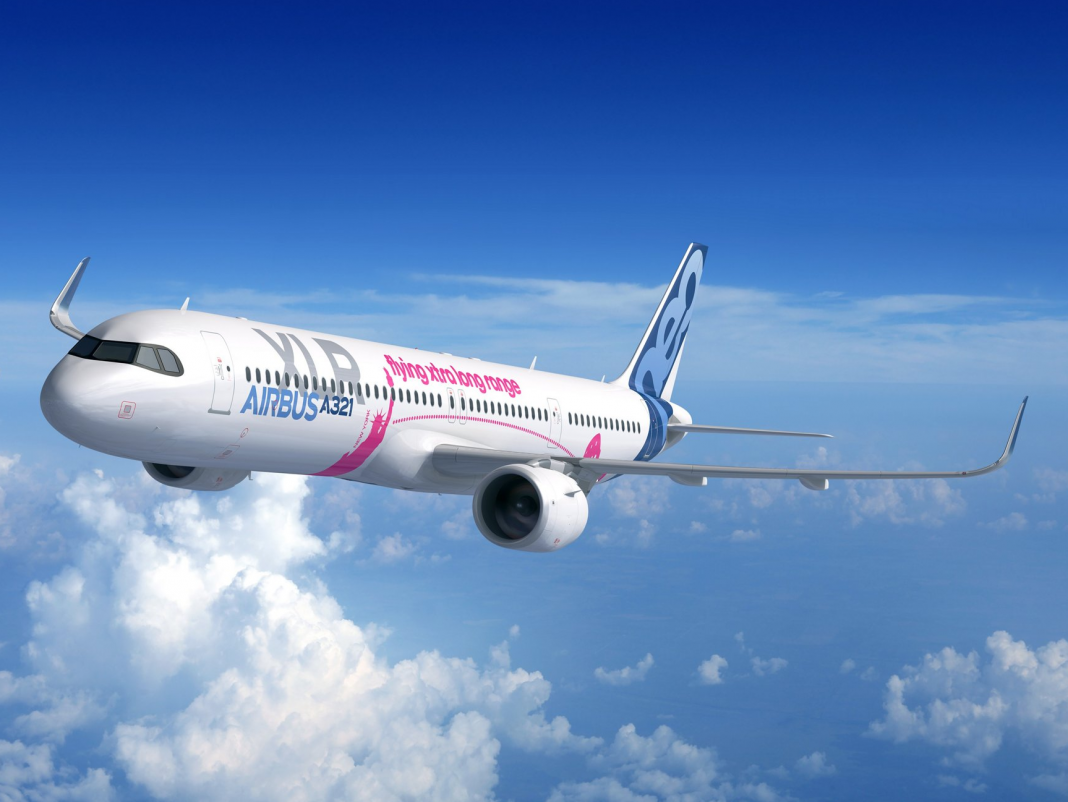Due to start flying in the next couple of years, the Airbus A321XLR is riding the zeitgeist. The plane is small, nimble, fuel-efficient, and can fly long distances – just what your typical airline wants right now. But does the A321XLR have the wings to fly across the Pacific? The answer depends on where you depart from and what part of the Pacific you want to cross.

The A321XLR can cross the North Pacific
Depending on the cabin configuration, the Airbus A321XLR will have a maximum range of 8,700 NM. Does that range give the plane the legs to fly transpacific routes? Up in the North Pacific, where the continental landmasses are closer, transpacific flying on the A321XLR is possible.
One of the most easterly major airports on the western side of the North Pacific is Tokyo Narita. If an optimally loaded and configured A321XLR took off from Tokyo, around half of the North American landmass is within the plane’s range. Alas, that takes in much of the less populated areas of North America – Alaska and the western half of Canada.
But within the A321XLR’s range are the key North American cities of Anchorage (5,526 km), Vancouver (7,522 km), Seattle (7,674 km), San Francisco (8,246 km), and Calgary (7,965 km). Of course, this assumes a reasonably lightly loaded and optimally configured aircraft, which doesn’t always make economic sense for airlines

Further south, the distances across the Pacific are greater. The biggest airport in the southwest Pacific is Sydney. The A321XLR can’t make it across the Pacific from there.

A321XLR transpacific flights can rely on some unreasonable assumptions
Whether the A321XLR is the right sized plane to hop between Tokyo and Seattle is another issue. While the plane may be capable of flying between the two cities, does it make sense to do so? There’s a well-publicized trend towards smaller aircraft with long ranges. The A321XLR suits that trend perfectly. But when flying gets underway again, will the A321XLR be too small for the transpacific city pairs?
The whole idea of a maximum range or flying distance can be academic. No airline unnecessarily pushes a plane to its maximum range. For safety reasons, all airlines build in fuel buffers to allow for diversions, delays, and emergencies. Further, commercial airlines exist to make a profit. That’s why they’ll fly from, say, Tokyo to Seattle, but not Tokyo to Wales (Alaska). Maximum ranges also assume a fairly light passenger and cargo load. That scenario rarely makes economic sense for an airline. To make money flying from Tokyo to Seattle, an airline wants a full cabin and belly hold. But the heavier the plane, the less far it can fly. That undermines the viability of using the A321XLR on transpacific routes.

North-south Pacific routes more likely for the A321XLR
The A321XLR will shine flying north-south routes on either side of the Pacific, rather than across the Pacific. Out of Narita, the A321XLR will comfortably reach much of China, Indo China, the Philippines, and Borneo. Over one billion people live within 8,700 kilometers of Tokyo.
The plane could also suit those west coast routes along the Americas, not just in North America but also South America. It’s just 6,573 kilometers between Santiago and Mexico City. Alas, Los Angeles is just beyond the A321XLR’s range from the Chilean capital. However, the Airbus could make it out to Easter Island with no problems from Santiago. But that’s not quite transpacific flying, more Pacific flying.
What do you think? What would be some good routes for the A321XLR across and around the Pacific. Post a comment and let us know.
[ad_2]
Source link


